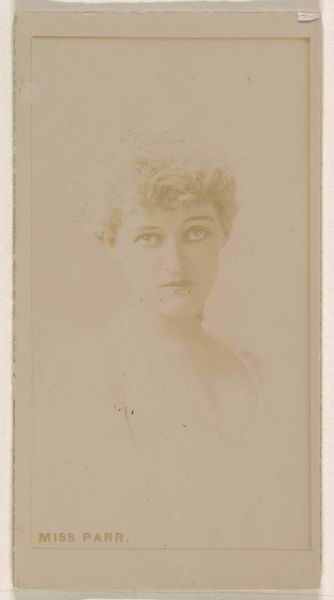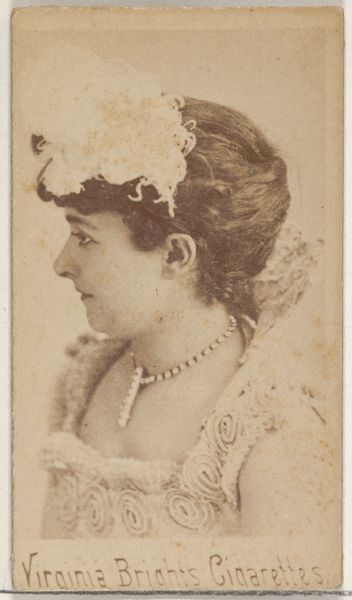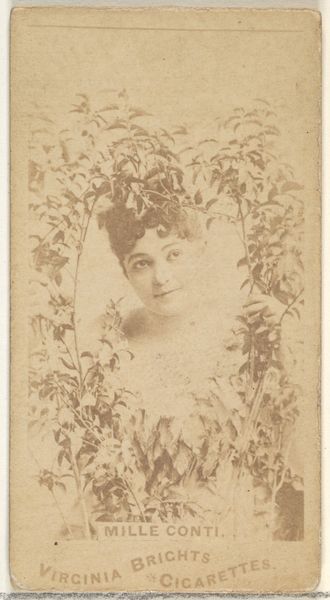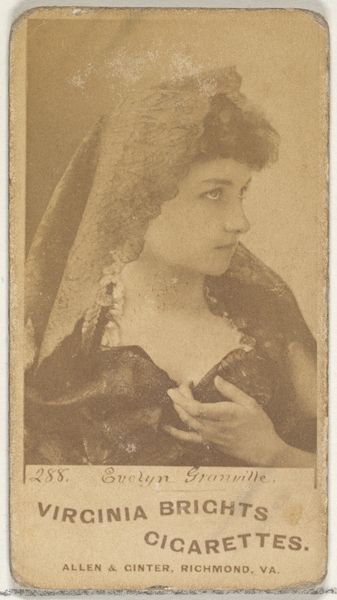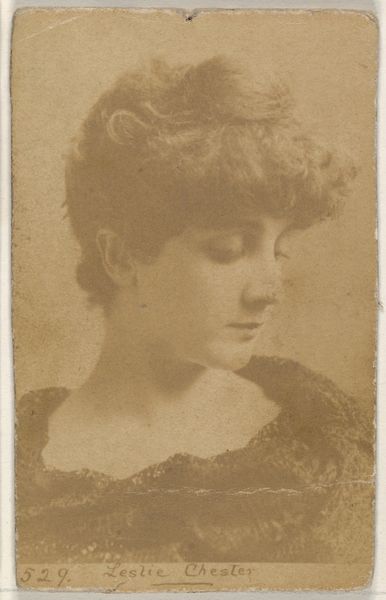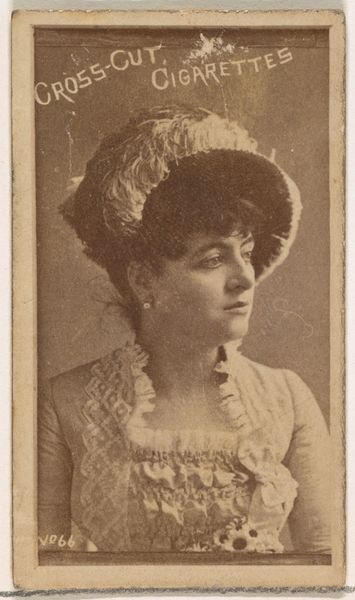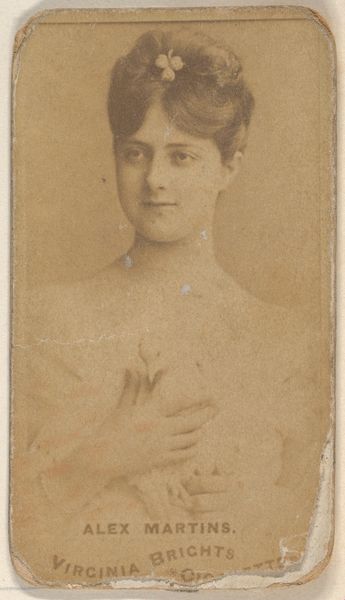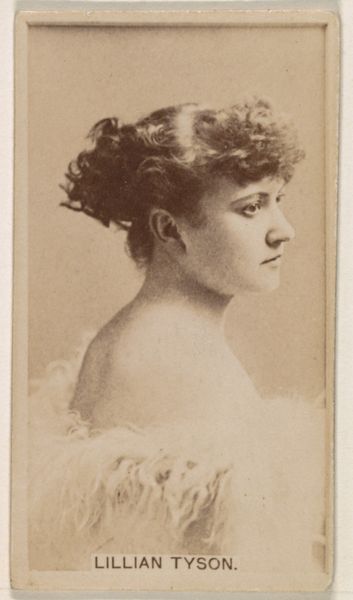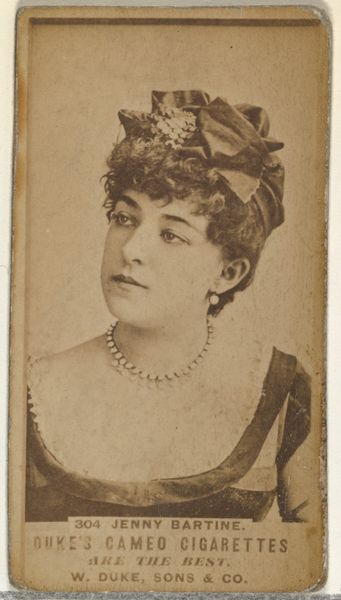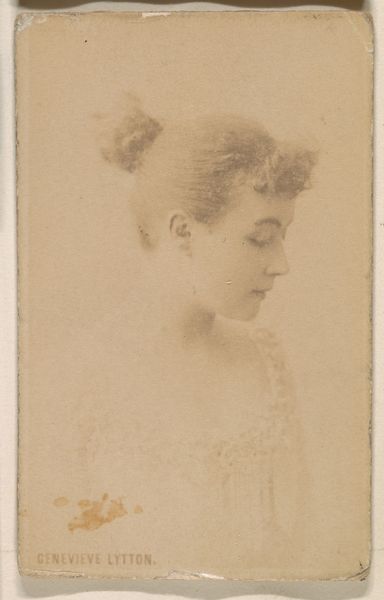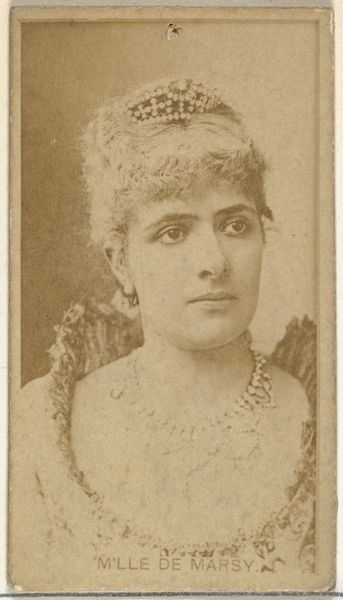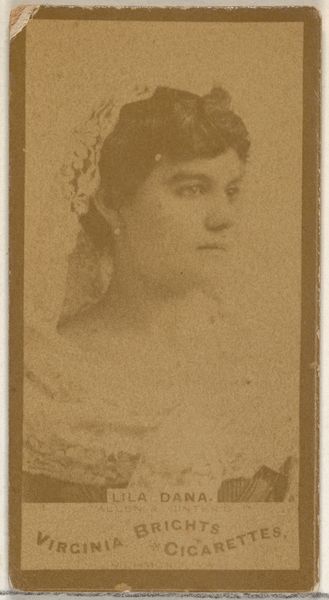
Portrait, from the Women's Portraits series (N198) issued by Wm. S. Kimball & Co. 1889
0:00
0:00
drawing, print
#
portrait
#
drawing
# print
#
figuration
Dimensions: Sheet: 3 1/4 × 2 13/16 in. (8.2 × 7.2 cm)
Copyright: Public Domain
Curator: This is a print titled "Portrait, from the Women's Portraits series (N198) issued by Wm. S. Kimball & Co." dating to 1889. You can find this piece here at The Met. Editor: There's a delicate feel about it—muted tones, petite size. Despite the formal pose, I find her rather captivating, even disarming. Curator: It is rather interesting. Note how the crosshatching and the density of line work vary across the image to render form and texture—her curls, the soft fabric of her gown. Observe also how the background has very little detail. The figure seems self-contained. Editor: It's striking how her gaze is so direct and confident, yet this image was circulated by a tobacco company as a collectible trading card. It's unsettling to think about the commodification of women’s images. It reminds me of how images of women are exploited even now. Who was she? Curator: Unfortunately, we lack any specific identifying information for the sitter in this piece, and the images were intended more for broad appeal, categorizing "types" of women as much as individual portraits. The company would include these in packages of cigarettes to increase collectability and incentivize more purchases, though it's thought that it had some positive side-effects like raising female visibility during that period. Editor: Visibility under the male gaze. And those collectible cards circulated so freely, reaching diverse social strata… the level of representation in that era! Did women have any control of how their images were used then? This all makes you wonder, especially with no record of who this subject was or if she consented. Curator: The ambiguity invites a reading into our present. But also one can see the printmaking on its own as simply the material conditions within a framework. It does have interesting features such as how it tries to create softness in a very constrained way by reducing detail, especially along the shoulders and collar. Editor: And the softness is there! Though I leave with the conflicting thought about how portraits, then and now, simultaneously reveal and conceal. Curator: True. We can admire the form while critiquing the frame.
Comments
No comments
Be the first to comment and join the conversation on the ultimate creative platform.

